Owing to the vast geography and historical legacy, Australian states have retained sizeable powers and freedoms from the national government since Australia became a federation of colonies in 1901.
In a world economy where cities and regions reign supreme in sustainable development, South Australia is keen to strengthen its relationship with South Korea in trade and investment, science and technology, defense and aerospace as well as food and wine, according to South Australian parliamentarian Martin Hamilton-Smith.
Hamilton-Smith -- South Australia’s minister for investment and trade, small business, defense and space, health and veterans’ affairs -- came to Korea last week on an annual mission to grease the wheels of trade with Asia’s fourth-largest economy.
“We hold up half the sky when it comes to international engagement,” he told The Korea Herald during the South Australian Food and Wine Showcase event in Seoul on Friday. “We are the actual ones bringing businesses to our state.”
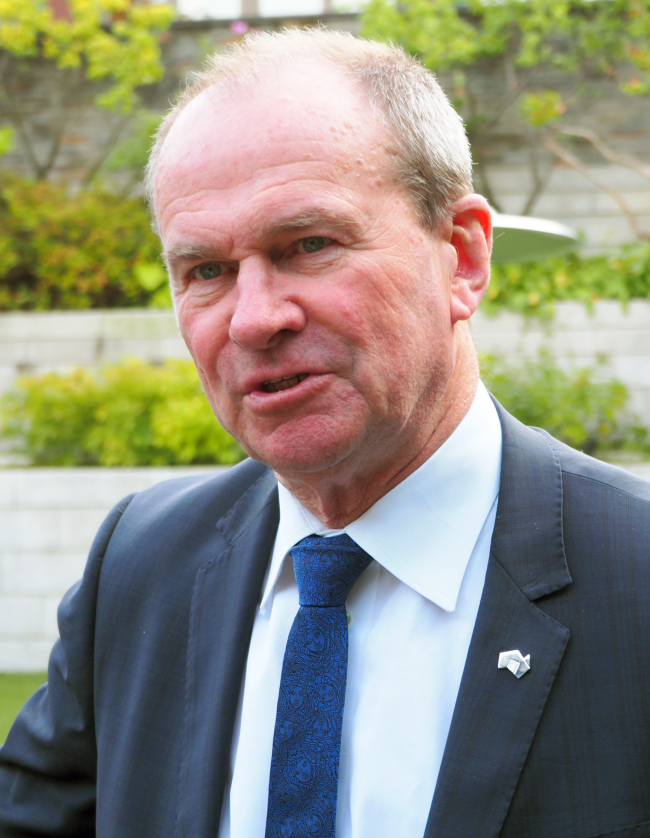 |
Martin Hamilton-Smith MP, South Australia’s minister for investment and trade, small business, defense and space, health and veterans’ affairs (Joel Lee/The Korea Herald) |
 |
A map showing South Australia (Wikipedia) |
South Australia, a state in the southern center, is the fourth-largest of Australia’s states and territories. It has 1.7 million people, more than three-quarters of whom live in the capital Adelaide and its environs.
The South Australian economy is a national and increasingly a global leader in food and wine, natural resources, renewable energy, defense manufacturing, education, health sciences, welfare and research and development, the Government of South Australia claims.
“We have world-class educational institutions, including the University of Adelaide, University of South Australia and Flinders University. We also offer many courses for English learning and vocational training in hospitality, food and wine, defense, green energy and elderly care sectors,” the politician said proudly of his constituency, calling it a “doorway” to Australia.
“Australia is in the Asia-Pacific and maintains very strong and close relationships with Asian countries, including Southeast Asian and Northeast Asian economies. We are part of the region. Over 20 percent of Australians speak languages other than English at home. South Australia is highly multicultural with a large Korean community,” the minister added.
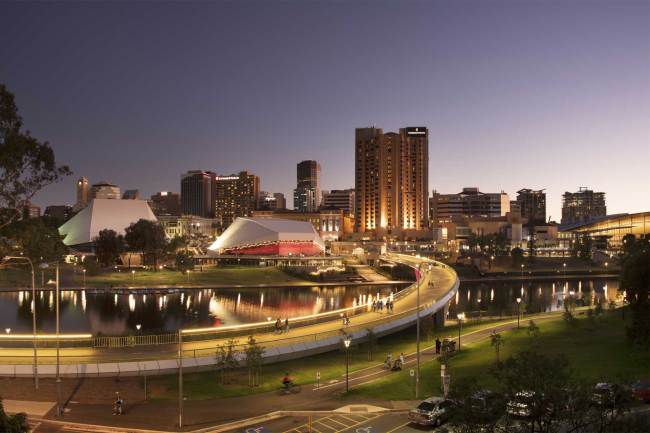 |
South Australian capital Adelaide (The Government of South Australia) |
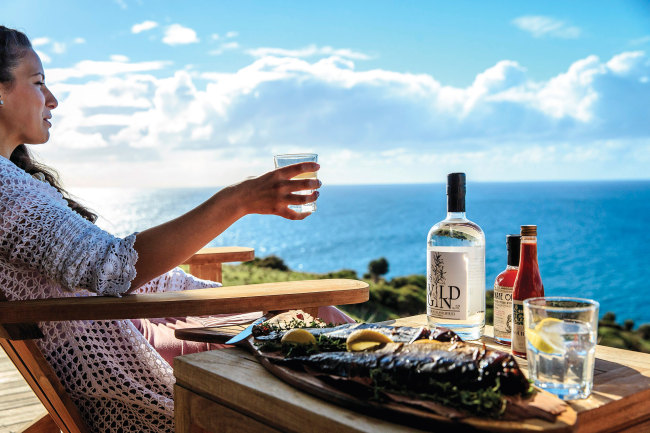 |
Kangaroo Island in South Australia (The Government of South Australia) |
Presenting South Australia as an attractive education hub, he said living costs in Adelaide are lower than in Sydney or Melbourne, with 35,000 international students residing in the state’s safe capital. He also pointed to rising collaborative opportunities with South Korea based on its advanced economy and large investments in research and science.
“Our economies are complementary. Korea needs our resources while Australia needs Korea’s human capital, talents and technologies. Your advanced and powerful manufacturing capacities, innovative skills, services industries and sophisticated consumer base can clearly transform Australian materials into sellable products and services.”
Highlighting Australia’s growing engagement with Southeast Asian and Northeast Asian economies, the minister confidently argued that the nation Down Under will be the “energy, food and resources engine room of Asia for a long time to come.”
Australia has abundant natural resources, chiefly mineral resources of copper, iron ore, gold and diamonds; energy resources of coal, oil, natural gas and uranium; and land resources for farming and logging. South Australia possesses one-third of the world’s recoverable uranium and large reserves of copper, iron ore and onshore oil and gas.
 |
Sellicks Beach, South Australia (The Government of South Australia) |
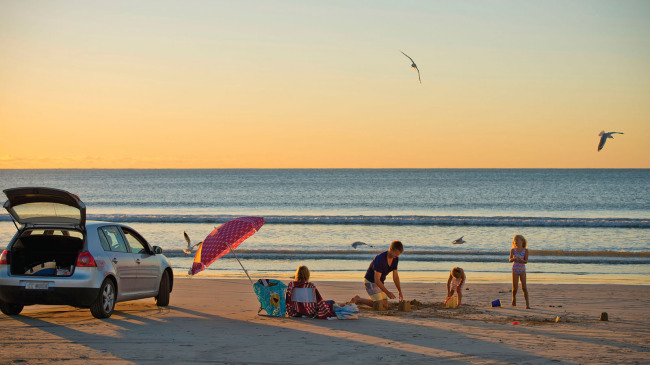 |
Long Beach, South Australia (Adam Bruzzone) |
Touching on the Australia-Korea Free Trade Agreement that entered into force on Dec. 12, 2014, he said improvements can be made to the bilateral accord to prune and disencumber it, particularly by eliminating nontariff barriers.
“We were disappointed that the Trans-Pacific Partnership agreement didn’t eventuate with the US’ withdrawal, but we shouldn’t stop our multilateral efforts to reduce trade and regulatory barriers as well as a whole list of nontariff barriers,” he underlined.
Before entering politics in 1997, Hamilton-Smith worked in property development, investment and private child care business, a civilian career he launched following 24 years of military service in the Australian Army. He served with the 6th Battalion of the Royal Australian Regiment and the Australian Special Air Service Regiment, a Special Forces unit, attaining the rank of colonel and undertaking overseas assignments in Malaysia, Egypt and Israel, among others.
“My Royal Australian Regiment participated in the 1950-53 Korean War and lost many lives. Korea also falls within my portfolio in terms of commemorating those lives lost during the war,” he explained, citing his veterans’ affairs oversight.
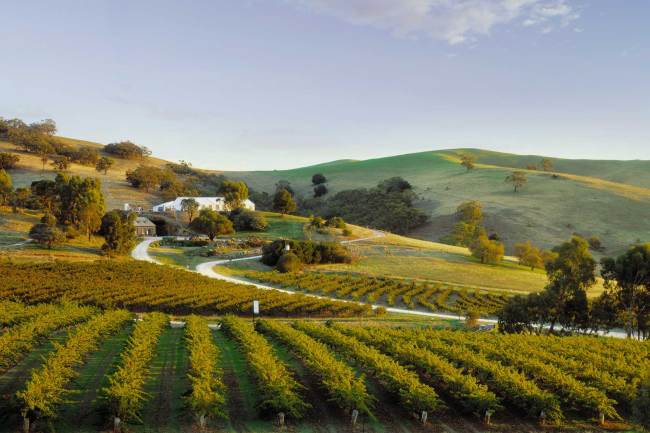 |
A vineyard in South Australia (The Government of South Australia) |
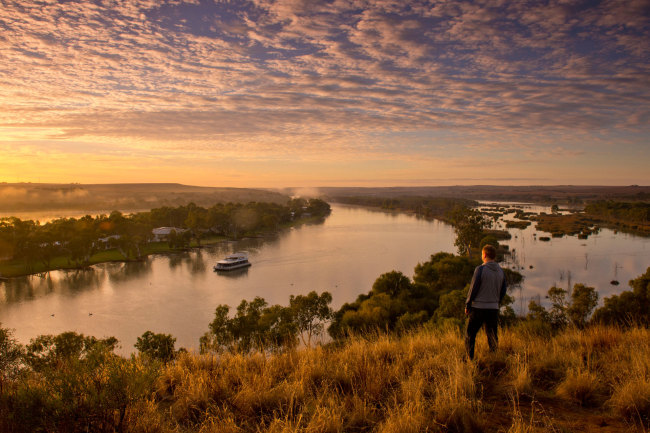 |
Murray River (The Government of South Australia) |
Mentioning the sister regional relationship between South Australia and South Chungcheong Province of Korea, Hamilton-Smith said, “More collaboration in arts, culture and sports would allow us to know each other better. If you want to do business, you have to be able to understand and trust each other first.”
The wine and food tasting event at Hotel Shilla in Seoul featured various wines of South Australia and Bultarra Australian Saltbrush lamb, with a live cooking show by chef Choi Kwang-ho. Eight wineries from South Australia -- Alpha Box and Dice, Barristers Block, Great Australian Wine Company, Negociants International, Nova Vita Wines, Raidis Estate, Tim Adams and Wines by Geoff Hardy -- participated.
South Australia leads the nation’s agriculture, food and wine industries, sustainably producing premium wine, beef and lamb that are exported worldwide alongside its Southern Bluefin Tuna, abalone, prawns, rock lobster, oysters and other seafood.
“We have 200 cellar doors within an hour north and south of Adelaide, which is one of eight Great Wine Capitals of the World, including Bordeaux, Meinz, Mendoza, Napa Valley and Verona,” said Brian Smedley, chief executive of the South Australian Wine Industry Association, in an interview.
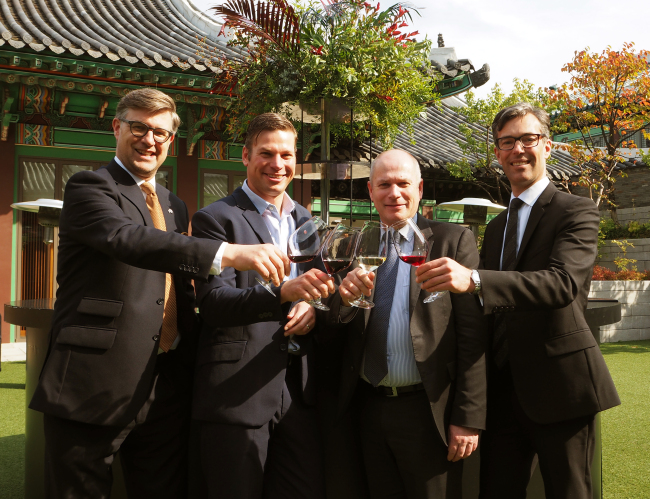 |
Representatives of South Australian wineries, including Brian Smedley, chief executive of the South Australian Wine Industry Association (second right), pose at the South Australian Food and Wine Showcase at Hotel Shilla in Seoul on Friday. (Joel Lee/The Korea Herald) |
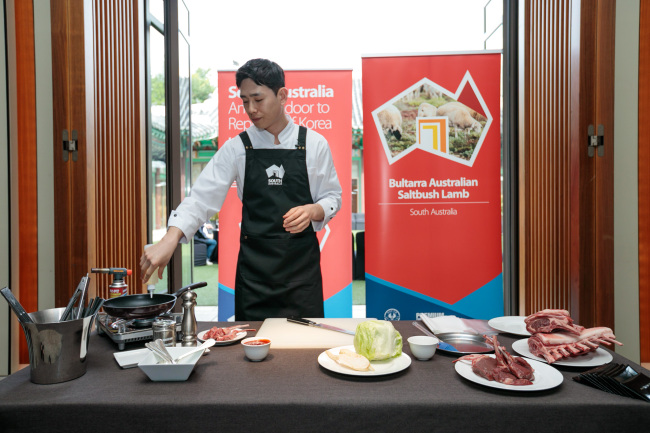 |
Chef Choi Kwang-ho cooks lamb dishes with South Australian lamb cuts (Austrade in Korea) |
“We have diverse climates and soils that add richness to our wines’ characteristics. There’s a lot of fruit characteristics in our wines and the variations will be subtle, depending on an early pick or a late pick, warm or cool sea breeze and et cetera, all of which influence the wine’s taste.”
Barossa Shiraz from the Barossa region is a fine example of a Shiraz wine, he noted, adding South Australian wines dominate the national market with 60 percent of local production exported and 59 percent of the country’s global wine export coming from South Australia. The wine sector generated $2.1 billion of revenue from 2015-2016, while the food and wine industry exported $5.2 billion of products during the same period.
Red wine dominates in South Australia, making up some 60 percent of total production on average and up to 90 percent in some regions. Sparkling wine and fortified wine are also popular and highly sought after globally, the chief executive said.
Wine grapes are either hand-picked or machine-harvested and produced through sustainable practices -- such as energy-efficient irrigation that saves water -- part and parcel of South Australia’s viticulture and winemaking, Smedly explained.
“Australians try to drink wine in moderation without getting into drunken revelry. It’s an enjoyable experience and you should come out feeling good from start to finish, while having great conversations in it,” he said. “Traditionally, our wines have been part of our meal, but increasingly they are enjoyed around the world in different social occasions. Our wines are versatile and provide diversity for any type of occasion.”
By Joel Lee (
joel@heraldcorp.com)
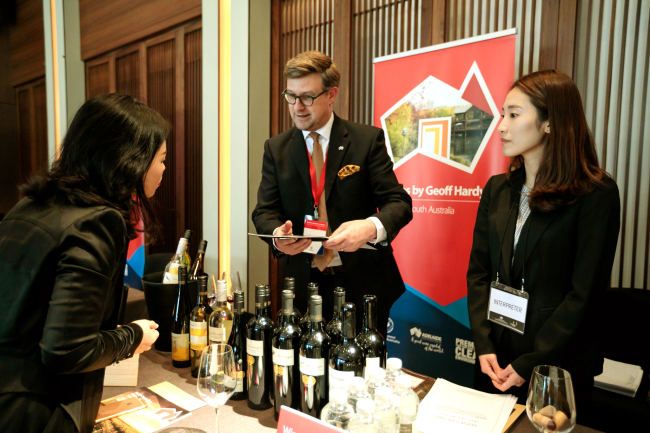 |
A guest looks for information on South Australian wine at the South Australian Food and Wine Showcase at Hotel Shilla in Seoul on Friday (Austrade in Korea) |
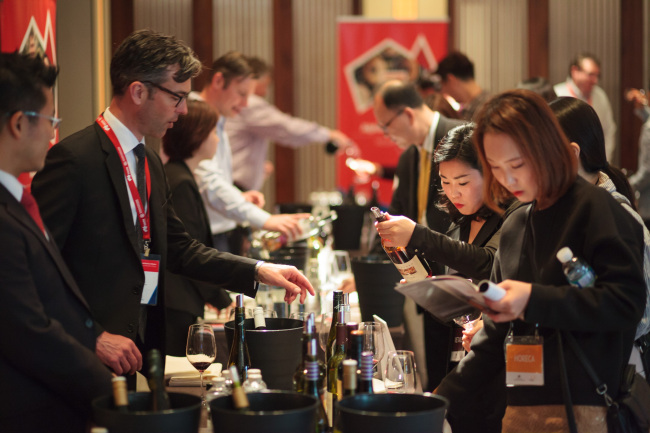 |
Participants try South Australian wine at the South Australian Food and Wine Showcase at Hotel Shilla in Seoul on Friday (Austrade in Korea) |

















![[Herald Interview] 'Trump will use tariffs as first line of defense for American manufacturing'](http://res.heraldm.com/phpwas/restmb_idxmake.php?idx=644&simg=/content/image/2024/11/26/20241126050017_0.jpg)
![[Exclusive] Hyundai Mobis eyes closer ties with BYD](http://res.heraldm.com/phpwas/restmb_idxmake.php?idx=644&simg=/content/image/2024/11/25/20241125050044_0.jpg)
